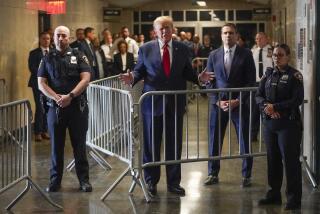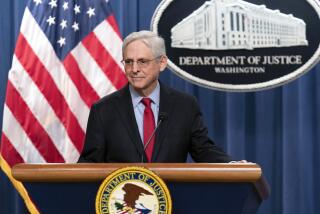Opinion: Metro’s plan for L.A. transit would be transformative... with one small fix
On Thursday, the Metro Board of Directors plans to vote to finalize its recently revised plan to vastly expand and improve Los Angeles’ transportation network over the coming decades. The plan calls for a permanent sales tax increase to fund more than $120 billion of new rail and Bus Rapid Transit (BRT) lines, as well as highway infrastructure improvements and local return dollars for communities to invest in bike lanes and other neighborhood transportation needs.
The plan is ambitious, and it should be. Improved infrastructure is critical to the future growth of Los Angeles County. That said, for it to be a success, it has to excite people. And it can, if a big but simple idea starts gaining momentum.
The big idea? Finish the lines.
Metro simply needs to speed up construction of two north-south light rail lines that are already half-built — the Green and Crenshaw lines. Extending the Green Line south from Redondo Beach to Torrance as well as building out the Crenshaw Line north — all the way to Hollywood — will knit together now disjointed parts of the Metro rail system to produce a synergistic whole.
By finishing the lines, Metro would allow riders to board a train in Hollywood and West Hollywood and travel all the way to Los Angeles International Airport (where the train would continue onto the Green Line tracks) and on to Torrance -- without ever having to leave their seats. Not only would riders in the urban core have smooth access to downtown L.A., the San Fernando Valley, LAX and the new NFL stadium, Valley riders — long-neglected by L.A.’s transit plans — would finally be able to access the jobs, healthcare and cultural, entertainment and shopping destinations just over the hill with a single transfer from the Red Line.
These plans aren’t a radical last-second change; they are a fulfillment of past promises including the 2008 voter-approved Metro expansion plan Measure R. In 2008 voters were told their support for Measure R would fund these lines. But those promises were put on the back burner, and the current Metro proposal would keep them there. Construction of the Green Line extension would not begin until 2026, and completion of the Crenshaw Line would not start until 2041.
Metro recently revised its plan to move these projects forward by five and eight years (from 2031 to 2026 for the Green Line, and from 2049 to 2041 for the Crenshaw Line), but 25 years is too long to wait for a rail line through the heart of L.A.
Instead, a “finish the lines” plan would have construction on these two extensions begin in 2018.
A study shows that building the northern extension of the Crenshaw Line alone, through West Hollywood to Hollywood, would add 39,900 daily riders to the system. But there’s more. Completing this north-south line would also enable riders to connect to the Red Line, Purple Line, Expo Line and Green Line.
The greater the connectivity, the greater the options. The more options, the more riders.
The exponential opportunity of filling this gap in the network is easy to understand. Optimizing the existing system to make our transit investments more effective is just smart planning.
Finishing the lines would link Torrance, Redondo Beach and LAX to Inglewood, to Hyde Park, Leimert Park, Crenshaw and Mid-Wilshire, to Beverly Hills, to Cedars-Sinai Medical Center (with 13,000 jobs, the region’s six-biggest employer), to the Beverly Center, West Hollywood, the Sunset Strip and finally to Hollywood itself. With a little extra effort it could connect to the 12,000 full- and part-time jobs at the future NFL Rams Sports and Entertainment district now being built in Inglewood.
Moreover, public opinion polling from last year shows that finishing the lines is popular with voters. Many of the communities along the proposed Crenshaw Line and Green Line extensions strongly supported Measure R in 2008. If Metro disappoints these voters again, it could put the entire $120-billion transit expansion plan at risk.
Finally, the Crenshaw Line and Green Line extensions are relatively easy to make shovel-ready. The Crenshaw Line extension is actively undergoing a feasibility study, and an environmental impact report for the Green Line has already been completed.
Metro’s plan for our region’s mass transit future needs to be transformational, financially sound and politically viable. If the Metro Board of Directors wants its plan to succeed, it needs to finish the lines.
James Butts is the mayor of Inglewood and a member of the Metro Board of Directors. Lindsey Horvath is the former mayor of West Hollywood and a current council member there.
Follow the Opinion section on Twitter @latimesopinion or Facebook
MORE FROM OPINION
Cutting through the drug manufacturers’ smokescreen on SB 1010
More to Read
A cure for the common opinion
Get thought-provoking perspectives with our weekly newsletter.
You may occasionally receive promotional content from the Los Angeles Times.






